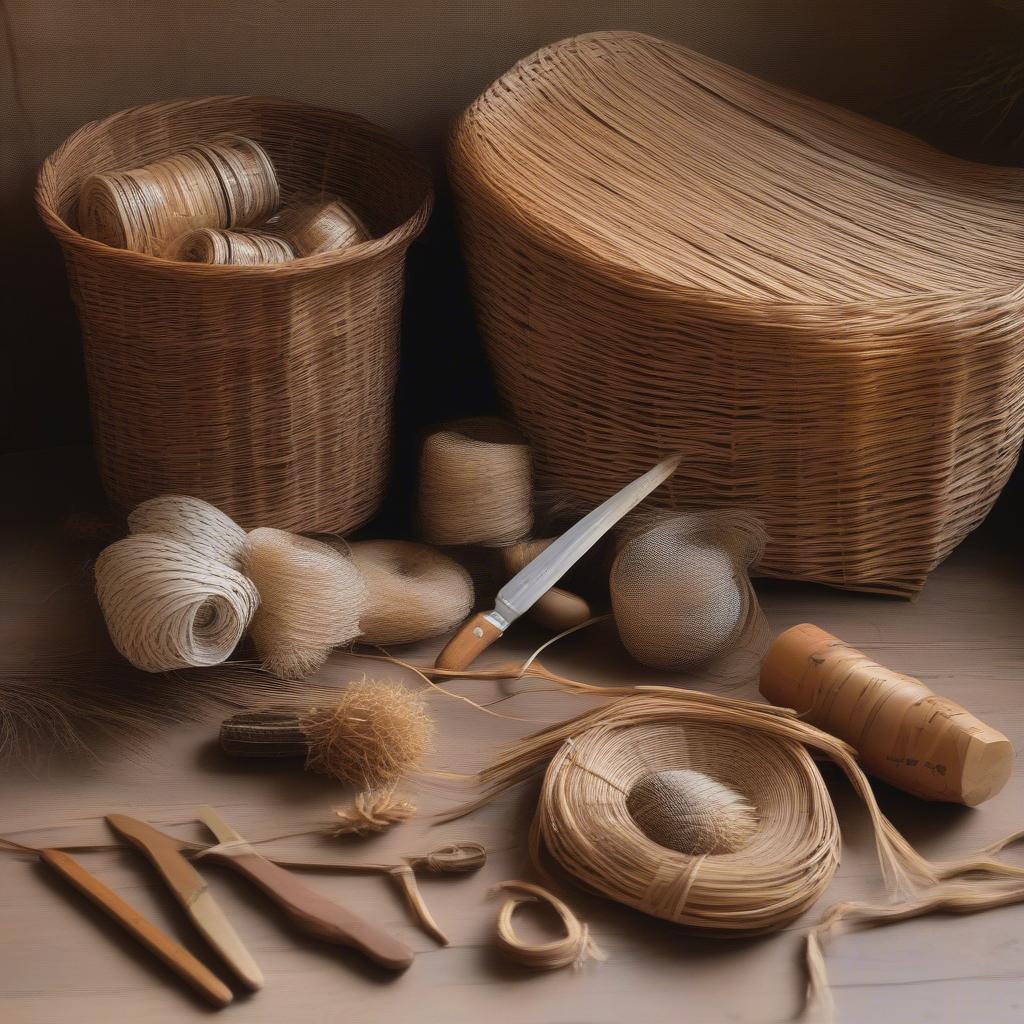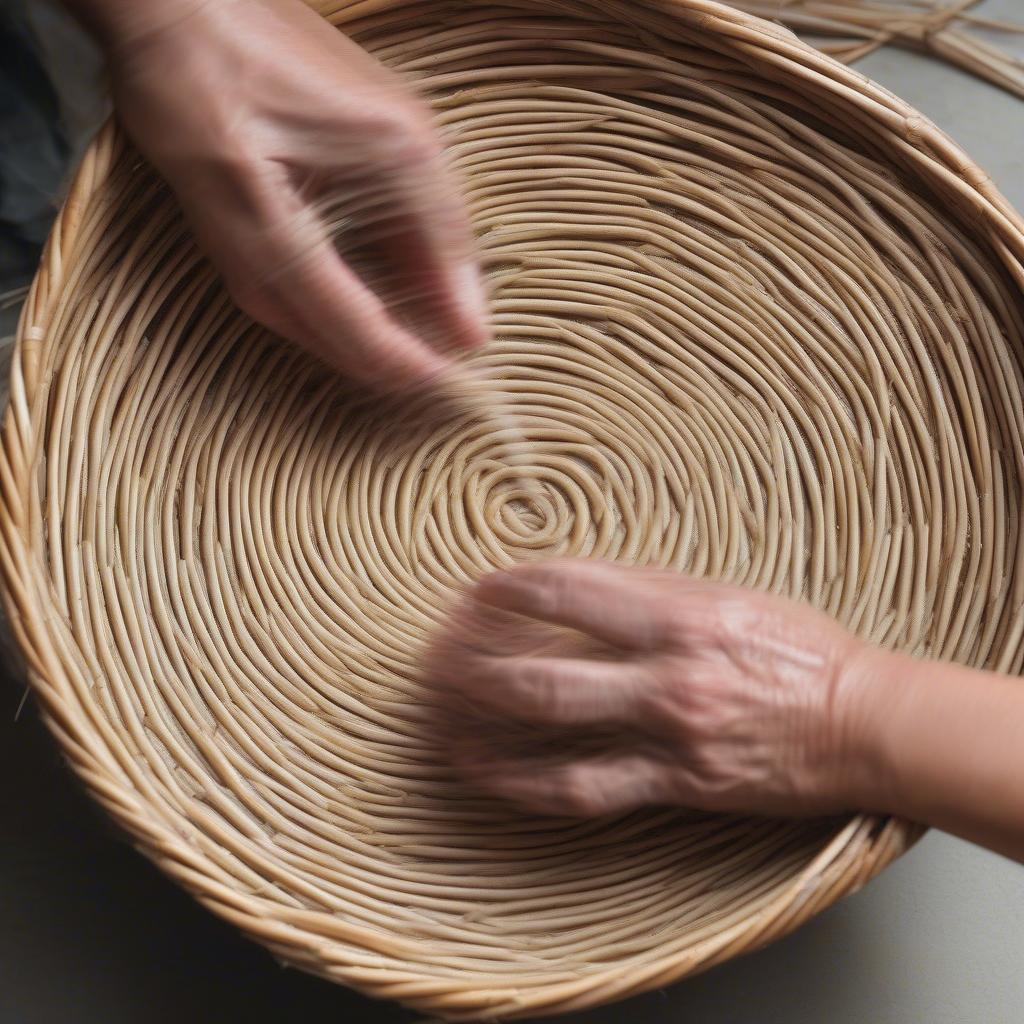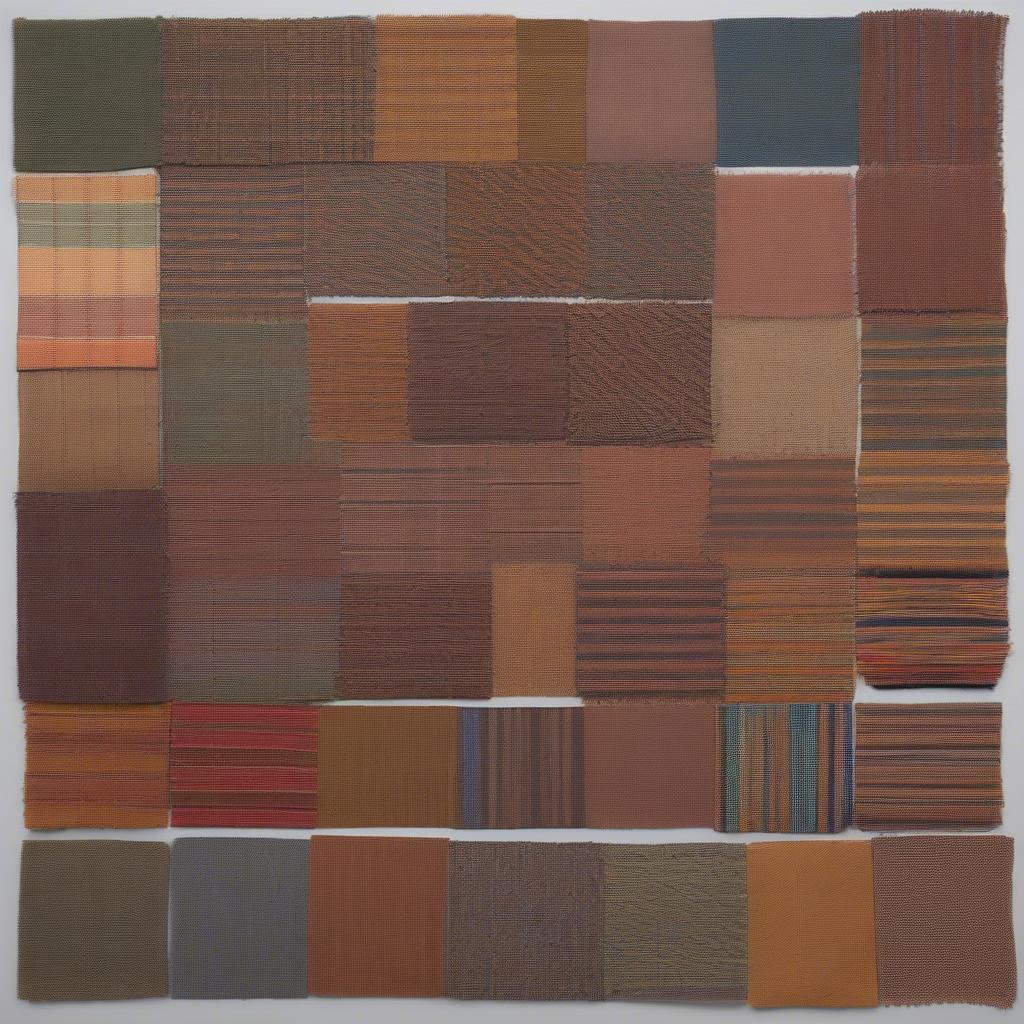Basket Weaving
How to Hand Weave a Basket
Learning How To Hand Weave A Basket is a rewarding experience that connects you with a rich crafting tradition. Whether you’re looking to create functional storage solutions or decorative art pieces, this guide will provide a comprehensive introduction to the art of basket weaving.
Getting Started with Basket Weaving
Basket weaving, at its core, involves interlacing flexible materials to create a three-dimensional form. This ancient craft offers a creative outlet and the satisfaction of producing something beautiful and useful with your own hands. From gathering materials to mastering basic weaves, we’ll cover everything you need to know to start your basket weaving journey.
 Preparing materials for basket weaving, including reed, wicker, and tools.
Preparing materials for basket weaving, including reed, wicker, and tools.
Choosing Your Materials
Selecting the right materials is crucial for successful basket weaving. Common materials include reed, wicker, willow, and even pine needles. Reed, known for its durability, is an excellent choice for beginners. Wicker, derived from rattan, offers flexibility and a beautiful natural aesthetic. Experiment with different materials to discover your preferences and create unique textures.
Essential Tools
You’ll need a few essential tools to begin. A sharp knife or pruning shears will be used for trimming and shaping the materials. A soaking tub or bucket is necessary for softening the reed or wicker before weaving, making it pliable and easier to work with. A measuring tape will ensure consistent sizing and a sturdy awl can assist in creating even spaces between rows.
Basic Basket Weaving Techniques
Several foundational techniques form the basis of most basket weaving projects. The most common is the “randing” technique, which establishes the basket’s base and shape. “Weaving” refers to the interlacing of the materials around the randing to create the basket’s sides. Let’s explore these techniques in more detail.
 Demonstrating the randing technique for creating a basket base.
Demonstrating the randing technique for creating a basket base.
Randing: Building the Foundation
The randing technique creates the base of the basket. It involves arranging a set of spokes, usually an odd number, and then weaving a smaller piece of material around these spokes to secure them in place. This creates a strong and stable foundation for the rest of the basket.
Weaving: Shaping the Sides
Once the base is established, you can begin weaving the sides of the basket. This involves intertwining the weaving material over and under the spokes, gradually building up the basket’s height and shape. There are various weaving patterns you can explore, adding complexity and visual interest to your creations.
Exploring Different Weaving Patterns
Beyond the basic weaving techniques, there are numerous intricate patterns you can incorporate into your basketry. Twills, twining, and coiling are just a few examples. Each pattern creates a distinct texture and visual effect, allowing you to personalize your baskets.
 Examples of different basket weaving patterns, including twills, twining, and coiling.
Examples of different basket weaving patterns, including twills, twining, and coiling.
Twills: Creating Diagonal Lines
Twill weaves create diagonal lines across the surface of the basket, adding visual interest and texture. This technique involves passing the weaving material over and under multiple spokes at a time, following a specific sequence.
Twining and Coiling: Advanced Techniques
Twining and coiling are more advanced basket weaving techniques. Twining involves twisting two or more weaving elements together as they are wrapped around the spokes. Coiling creates a spiral structure by sewing a foundation material together with a separate binding element. These techniques allow for greater creative freedom and the creation of more intricate designs.
Conclusion
Learning how to hand weave a basket opens up a world of creative possibilities. From choosing your materials and mastering basic weaves to exploring more complex patterns, the journey is filled with learning and satisfaction. With practice and patience, you’ll be crafting beautiful and functional baskets in no time. Start weaving today and discover the joy of this timeless craft!
FAQ
- What is the best material for beginner basket weavers? Reed is a great option for beginners due to its durability and ease of use.
- How do I soften reed for weaving? Soak the reed in warm water for about 30 minutes, or until pliable.
- What are the basic basket weaving techniques? Randing and weaving are the two fundamental techniques.
- What is the difference between twining and coiling? Twining involves twisting weaving elements together, while coiling uses a spiral sewing technique.
- Where can I find more basket weaving patterns? Explore online resources, books, and local craft stores for inspiration.
- What are some common mistakes to avoid in basket weaving? Common mistakes include not soaking the reed enough, weaving too tightly or loosely, and not starting with a strong base.
- How long does it take to weave a basket? The time varies depending on the size and complexity of the basket, but a simple basket can be completed in a few hours.
Do you have other questions? Check out these related articles:
- Basket Weaving for Beginners: A Step-by-Step Guide
- Exploring Different Basket Weaving Materials
- Advanced Basket Weaving Techniques and Patterns
For assistance, please contact us at Hanoi, Vietnam or Tech Avenue, Suite 12, San Francisco, CA 94105, USA. We have a 24/7 customer support team.
